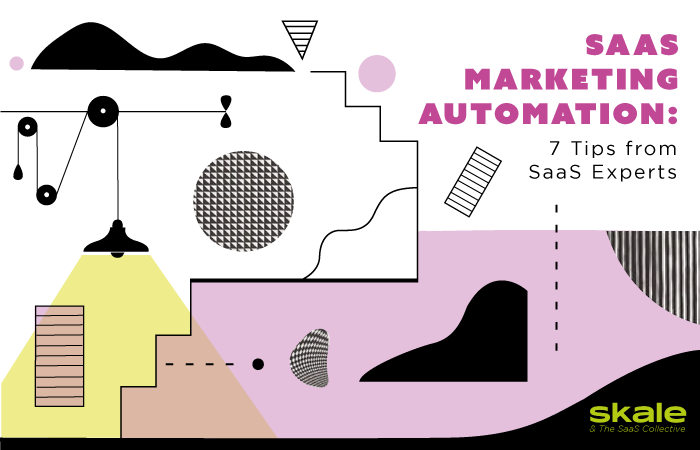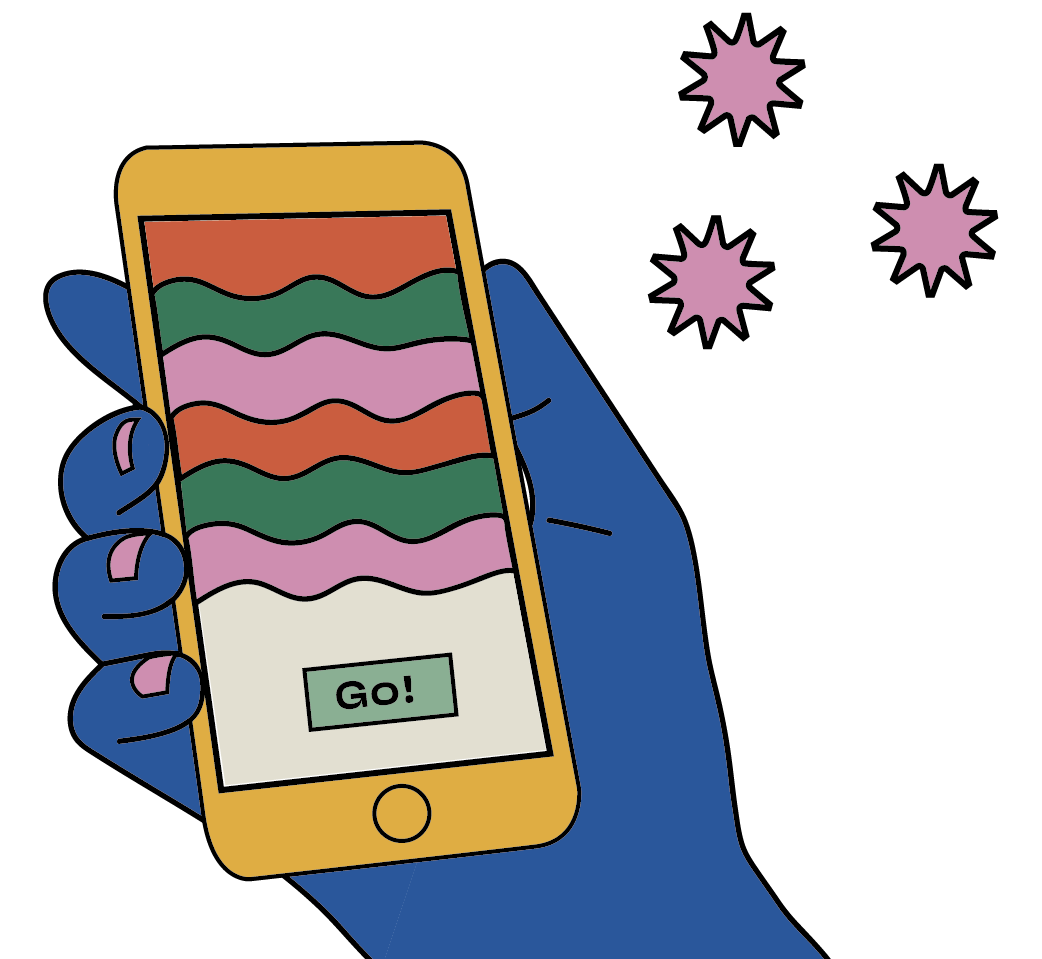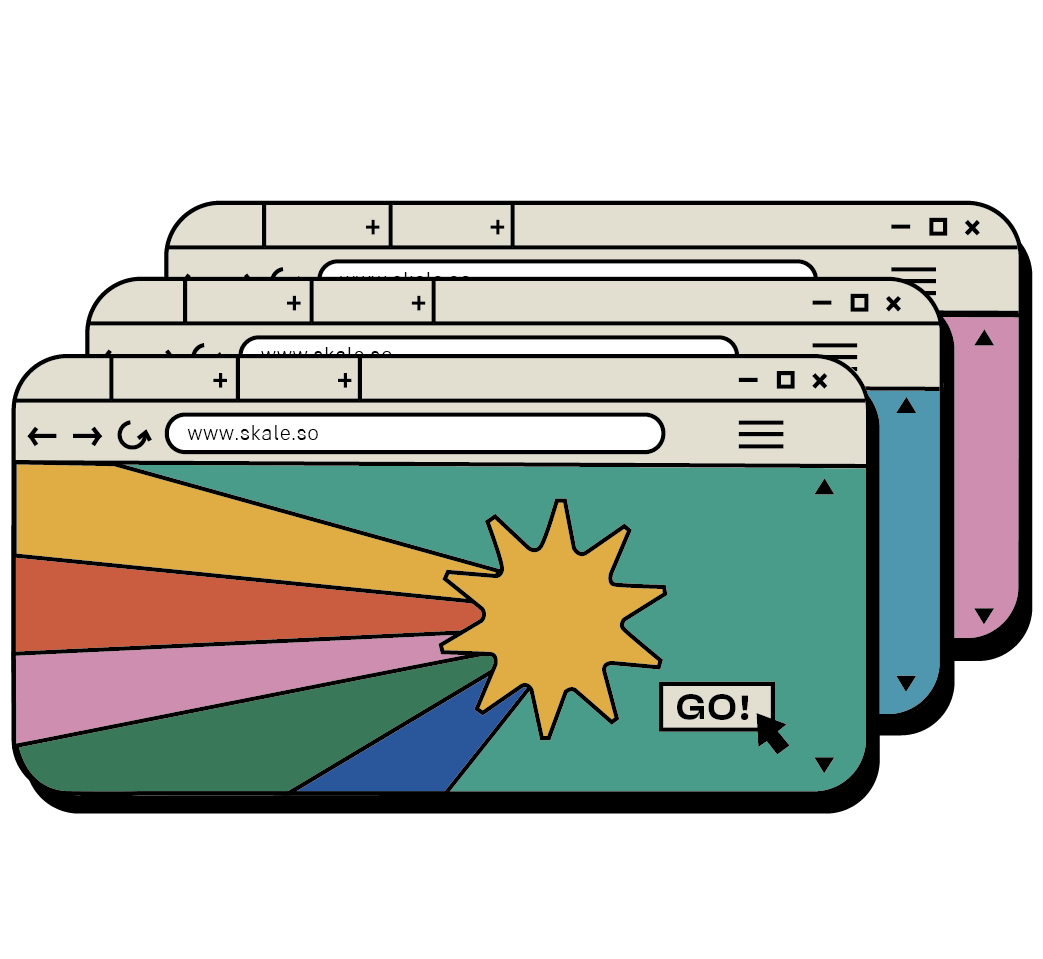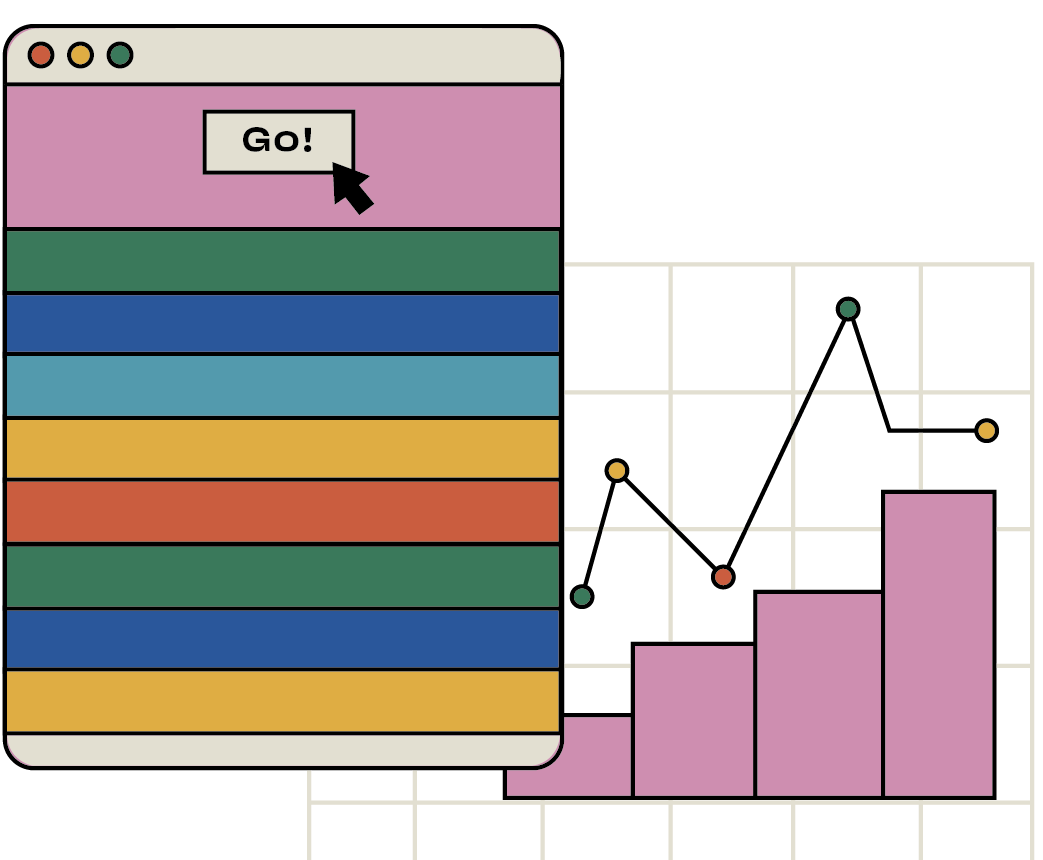
The best 8 SaaS marketing events to attend in 2024
In this comprehensive guide, we'll showcase some of the best SaaS marketing events in 2024 that you shouldn't miss.


Step up your SaaS marketing game with Skale
Let the B2B SEO experts show you the full power of automation
Schedule a callWe all know the pains of marketing. It’s cumbersome, it’s complicated, and it’s ever-changing. However, we all secretly love it. It’s why we’re here. SaaS marketing is no different. If anything, it’s changing even quicker than other industries as we’re often the driving force behind new tech.
At the same time, SaaS marketing teams are notorious for automation. We’re forever adapting our streamlined product processes into our marketing strategies, so they’re as slick as the rest of our operations. Well, supposedly so. That doesn’t mean to say it’s always a success. If you’re a fellow SaaS marketer, then we both know you’ll work on an automation process until it’s perfect because we know the time it can give us back.
This guide will explore seven SaaS marketing automation tips recommended by SaaS marketing agency experts. Some of these tips could be game-changers for you, some you probably know already, but now we’ll shine a light on. Keep automating people; it will be well worth it.
SaaS marketing automation tips every SaaS company needs; as recommended by SaaS marketing experts:
A brief history of marketing automation. Back in 2016, 71% of companies were using some form of marketing automation. Back then, 74% of those marketers claimed the most significant benefit was saving time with their marketing processes.
Yet, we raised our bots well, and today 66% of marketers rank high-quality leads as their top reason for automating marketing processes. B2B marketing automation has rocketed in the last five years and will continue to do so as more and more use automation to scale personalization.
We’ve not only embraced the bot, but we’re also benefiting from it. Companies that automate lead acquisition see a 10% increase in profits in 6-9 months.
Automation is no longer a trend or a tactic for the future. It happened yesterday, and today we’re making it even better. Whether we’re in ecommerce or SaaS, the functionality of our inbound and outbound marketing strategies is radically lifted by marketing automation software.
It’s helping us upsell, cross-sell, acquire new customers, lift the customer experience, and tailor the customer lifecycle.
Let’s see what the pros are doing to up their marketing automation game.
We automate to scale our processes, our relationships, and our business. That much is clear. Customers today are aware they’re most likely not talking to a person directly, but that doesn’t mean we can’t give them the most personalized experience with us possible.
As SaaS marketers, we tend to be so hot on getting someone into an automated sales funnel, yet not so quick to move them out—when the time is right. Audience segmentation is essential, and we need to remember those who are no longer a direct audience deserve their own segment too.
“Make sure you can successfully “eject” your users when they complete a goal. For example, imagine you’re running an automation campaign through email and retargeting ads. Your campaign goal is to get people to subscribe to your freemium plan. Once that goal is complete, don’t leave people sitting on that same list. Remove them from this audience to avoid awkward follow-up messaging when they’ve already fulfilled a goal or become a customer.”
Jake Stainer, SkaleThis way, you avoid any unhappy customers, show people you’ve got your systems together, build trust, and potentially save on marketing spend now you’re no longer pushing material to people who don’t need to see it.
💡 Pro Tip: If you have a shorter sales flow, try to automate your tools so you can do this in real-time, rather than a weekly or monthly haul.
“We need to automate our lead generation processes, and we need to do it now!” The haste to build out sales funnels, test audiences, and trial different content can get real overwhelming, real fast.
“Make sure to have solid naming conventions across everything you’re doing. If not, it will get messy. Related to this, create a company-wide dictionary to get everyone on the same page with the terminology you use. For example, what is the difference between customer, conversion, paying user, client, and subscriber—for your business?”
You’re not only naming for your benefit but anyone you’re reporting to. So make sure there’s a clear infrastructure around your naming conventions and one that’s logical for people that need to navigate your lists on their own.
Take an SEO approach to naming conventions.
It will help to build a company knowledge base where you map out your keywords and terms, so people don’t rely on only one person for knowledge.
We are SaaS marketers; we love SaaS marketing tools to help get our job done. What don’t we love? Failed integrations. Before you onboard any marketing automation tools, you need to check it can integrate with your current tech stack.
“Integrate into the bigger tech stack of your SaaS product. Mistake = your marketing automation platform doesn’t sync with your product analytics software = limited to what you can actually do.”
No matter how great a tool may seem or how perfect the pricing plan is for your budget, if you can’t integrate that tool with the rest of your SaaS tech, then that data and workflow are sitting in a silo.
Or, what’s worse, you’ll be having to cross-reference and exchange data manually—which completely defeats our point of automating processes.
Zapier is a fantastic tool to help with your integrations.
Once you know your tools can integrate, it’s time to combine them for a powerhouse of knowledge and automation.
“Spend time syncing up your tools so that you can gather and study lead behavior. With this info, you should be able to identify and understand a handful of activities that indicate a step towards stronger intent—or the other way, for that matter.
Choose (or build) a tool that allows you to create a workflow that adapts the contacts’ journey based on their behavior, like reconversions, events within a trial or demo event, or specific page views. Get your tools working with each other, and they’ll work with you and your team members.”
Asya Sharrow, Senior Operations Manager @ Marketing Supply Company
Just because a user has churned doesn’t mean they should be disregarded. Let’s remember, for a user to churn; they needed to have been somewhat interested in the product and our brand in the first place.
Secondly, these users have a certain amount of knowledge about who we are and what we do; despite their churning, they’re still more informed than entirely new users.
“Have an automation sequence in the back to ‘resurrect’ your churned users. They already have their credit card on file, so it should be easier to get a churned customer back than persuade a free user to upgrade.
Don’t forget to have a churn-survey when someone unsubscribes, and feed the answers into your CRM so you can send personalized churn resurrection campaigns based on these reasons.”
All is not lost when someone churns; their journey just needs to be rewritten.
89% of marketers use email as their primary source for lead generation, and personalized emails can produce 18x more revenue than generic send-outs. It means our email CRM needs to be optimized and automated as in detail as possible.
“We need to build specific email nurture flows based on user behavior. That user behavior doesn’t need to come from how someone interacts with your previous emails. Combine your SaaS marketing stack, transfer data, and build email flows based on user behavior across touchpoints.”
Fung-Lin W. Director of Retention Marketing at MongoDB
💡 Pro Tip: Look at your email flows as the backbone of your customer journey. Any other comms efforts around email communications should reflect what a customer has already seen in their inbox.
Simultaneously, depending on someone’s interaction with your brand should determine the journey they switch to. There’s nothing worse than sending someone a 6-month check-in when they churned two months prior. Eject or shift users, depending on where they are elsewhere on their customer journey with you.

Need help building email nurture flows?
Check out this guide on the winning SaaS email marketing methods
Read it hereData, data, data, it’s our best friend if we treat it well. At the same time, it can also be our worst enemy—and elusive when we need it most. If we want our marketing automation to function to its utmost potential, we need to ensure we’re feeding our automation tools with the data they need to perform. Even bots get hungry.
“Make sure you can get straightforward insights and use them to your advantage. There are simple attribution models in Marketo like ‘last touch up to lead’ meaning the last marketing channel that should take credit for a person become a lead in your CRM.”
For all of the automating our tools can help us to do, sometimes it’s good to manually look at the data and have that inform our larger strategies. Our SaaS tech stack can optimize audiences, messaging, content, the works. Yet, the initial strategy needs to come from humans. 🤖
Always give yourself the time to assess your data and your marketing automation performance. What are your SaaS marketing metrics telling you? Is your strategy aligned with your marketing playbook? Is there a way your content strategy can be delivered better? Is there perhaps a new route to market, or even a new market entirely, you can consider going on the data you have in front of you?
We mustn’t leave our technology to it. Sure, it will run well enough, but let’s continuously assess how we can do one better; using the data we’re collecting to make informed decisions.
This is possibly the make or break of your SaaS marketing automation efforts. It’s what every point up until now has been building up to. A multi-touchpoint attribution strategy is a must if you want to optimize your automation efforts.
Of course, to get here in the first place, your tech stack needs to be in communication with each other and your team. You’ll also need to have a rocking content production strategy, pristine marketing personas, and accurate audience lists to match.
You’ll need to map out your customer journey, the content each customer will see, and where they will see it. Autopilot is an excellent tool for this.
Include email, product, social media, SMS, digital marketing campaigns, landing pages, onboarding, influencers, whatever channels you’re using to communicate. At the same time, consider all of your content types, videos, webinars, templates, blogs, case studies, Typeforms, podcasts, the works.
After you’ve done that, assign a point system (lead scoring) to your content and determine how many points someone needs to enter the next stage of a nurture journey.
Salesforce is a famous tool for this. But, take this step with caution. It can be a powerhouse of an automated SaaS marketing funnel, but it needs an abundance of time and knowledge to get right. If you’re taking this task on, gather the resources you need first and dedicate yourself to it.
Done right, it’s a goldmine but done poorly and it can be a disaster.
Startups and corporates need to streamline and customize their marketing flows with marketing automation tools if they want to scale; fact.
“Ensure there are clear KPIs defined before running any automation campaign: increase MQL production, product activation, lead pick-up, etc., so you can track if your automation efforts are on the right path or not.”
Jason Quach. Marketing Automation Manager @ Hootsuite
Once things are running smoothly, optimize and make your processes even better.
There’s no rest for the wicked! Talking of wicked, if you’d like to be part of our rapidly growing SaaS marketers community and feature in future articles like this, reach out!

Drive your MQL growth today
Find out how Skale can help increase your MQLs with marketing automation
Schedule a callSaaS marketing automation refers to the set of tools and technologies that allow SaaS businesses to automatically run multiple tasks across different marketing channels.
Zapier, MailChimp, Autopilot, Typeform and HubSpot
Marketing automation is helping businesses upsell, cross-sell, acquire new customers, lift the customer experience, and tailor the customer lifecycle.
Learn more about
SaaS Marketing

The best 8 SaaS marketing events to attend in 2024
In this comprehensive guide, we'll showcase some of the best SaaS marketing events in 2024 that you shouldn't miss.

7 Best SaaS Copywriting Agencies & Services in 2024
11+ SaaS copywriting agencies that will educate your audience, boost revenue, and nurture leads.

9 SaaS Content Marketing Agencies in 2024: Reviews & Pricing
Create content that generates serious revenue when you work with a SaaS marketing agency from this list.